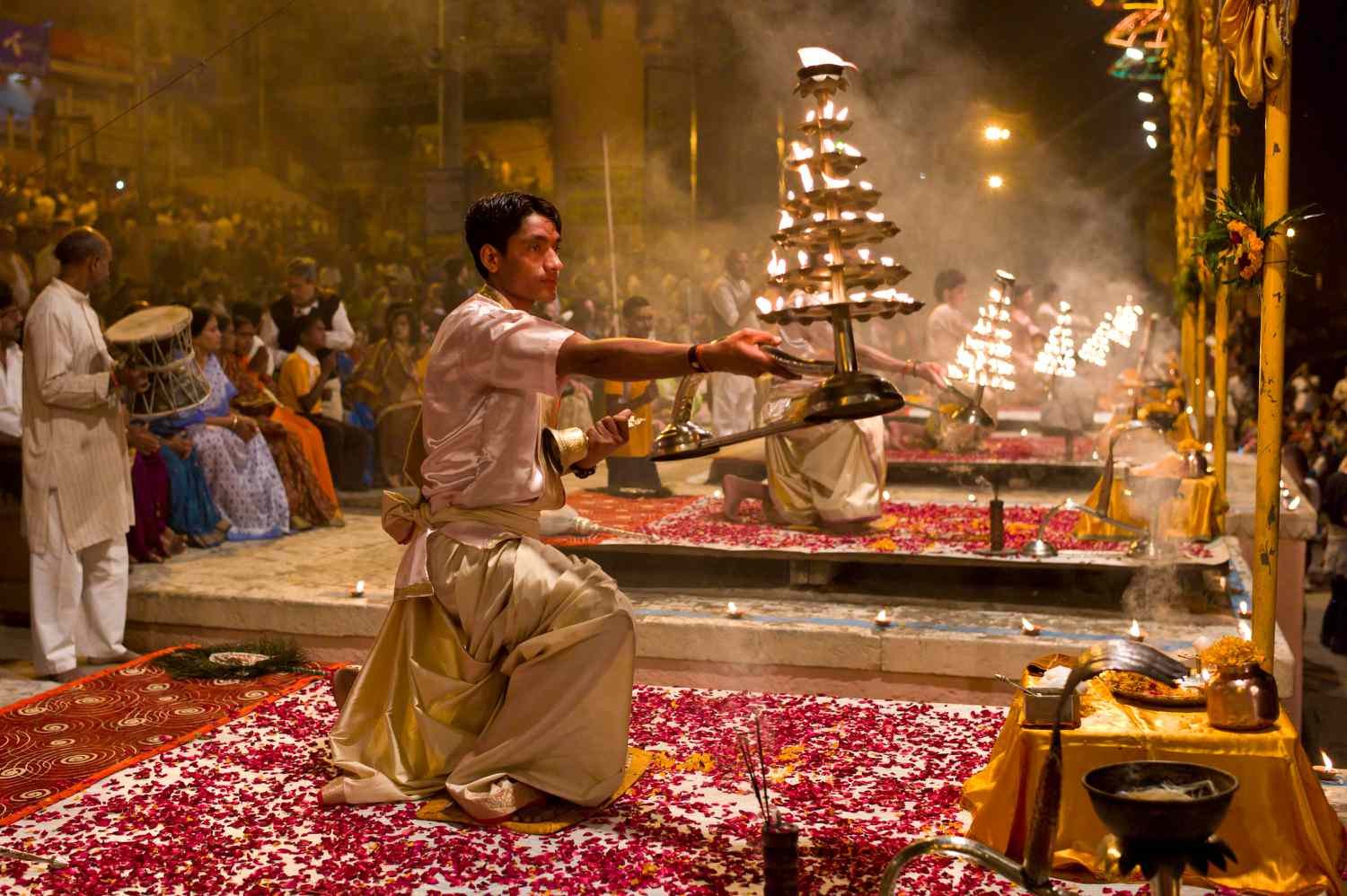Vrindavan: In the Footsteps of Lord Krishna
Vrindavan, a town in Uttar Pradesh, is synonymous with the playful and loving deity, Lord Krishna. It is here that Krishna is said to have spent his childhood, and the echoes of his divine play, or ‘leela’, still resonate in every corner of the town.
Temples and Pilgrimage Sites: Vrindavan is home to over 5000 temples dedicated to Lord Krishna and his consort, Radha. The most prominent among them is the Banke Bihari Temple, a shrine that attracts devotees from across the globe. The temple’s atmosphere is charged with devotion, especially during the arti ceremonies when the air is filled with the fragrance of incense and the sounds of ringing bells.
Another significant temple is the ISKCON Temple, also known as the Krishna Balaram Mandir. It stands out with its immaculate white structure and is a hub for international pilgrims seeking spiritual solace.
Festivals: The town comes alive during festivals like Holi and Janmashtami, celebrating the birth of Krishna. Holi in Vrindavan is an explosion of colors, where locals and tourists alike partake in the revelry, smearing each other with vibrant hues and drenching in the joy of the occasion.
Varanasi: The Eternal City
Varanasi, one of the world’s oldest living cities, is a spectacle of faith and tradition. Situated on the banks of the Ganges River, it is considered the spiritual capital of India.
Ghats and the Ganges: The city’s ghats — steps leading down to the river — are the center of life in Varanasi. The Dasaswamedh Ghat is particularly famous for the Ganga Aarti, a grand evening ritual where priests perform offerings to the river amidst chants and fire.
Sarnath: A short distance from Varanasi lies Sarnath, where Lord Buddha delivered his first sermon. The Dhamekh Stupa and the Archaeological Museum here are significant sites for Buddhists and history enthusiasts.
Culture and Craft: Varanasi is also known for its silk weaving and Banarasi sarees. The intricate designs and quality of the silk make these sarees coveted items across India.
Taj Mahal: A Monument of Love
No visit to India is complete without witnessing the splendor of the Taj Mahal. Located in Agra, this white marble mausoleum was built by Emperor Shah Jahan in memory of his beloved wife, Mumtaz Mahal.
Architecture: The Taj Mahal is a masterpiece of Mughal architecture, combining elements from Persian, Islamic, and Indian styles. The complex includes the main tomb, gardens, a mosque, and a guest house, all symmetrically laid out to create a harmonious whole.
Symbolism: The Taj Mahal is not just a monument but a symbol of eternal love. Its beauty transcends time, drawing millions of visitors who leave spellbound by its magnificence.
Conclusion: A Journey Through Time
A tour of Vrindavan, Varanasi, and the Taj Mahal is more than just a trip; it’s a journey through the annals of time, offering a window into India’s soul. Each destination leaves an indelible mark on the traveler, beckoning them to return to this land of wonders.






